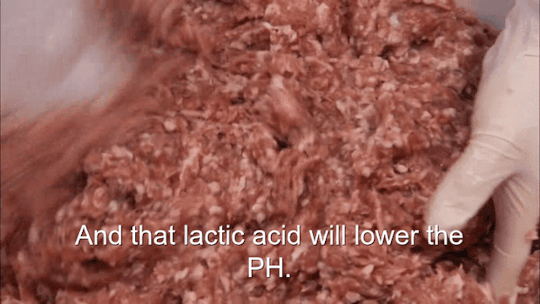#lactic acid
Text
i never bothered to post anything here before now, but this cannot wait.
*rams desk* LACTIC ACID.
THIS FUCKER

called THIS (and i hope this is the right diagram. Might not be i’m too mad to double check)

LACTIC ACID.
LACTIC. FUCKING ACID.
Now, I won’t say I blame him. After discovering it from its presence in sour milk, it makes PERFECT sense to name it after milk.
But now... Ohhhh, now we know. Now we know that it is the chemical in the MUSCLES responsible for ENABLING ANAEROBIC METABOLISM of GLUCOSE. It has NO CONNECTION to ANY OF THE OTHER “LACT” PROCESSES OR CHEMICALS. IT IS NOT LACTOSE. IT IS NOT LACTATION. YET WE CONTINUE TO CALL IT LACTATE. LACTATE! WHY?? WHY WOULD WE CONTINUE THIS FARCE? THIS ATROCITY?
I am dedicating my LIFE to becoming a well-respected and world-renowned scientist in this field. I’m gonna GO TO COLLEGE. I’m gonna CHANGE THE WORLD. And when the time comes that I have created a solution to some great problem, and the world begs me to provide it... I will deliver my ultimatum.
Rename. Lactic. Acid.
#chemistry#biology#lactic acid#FUCK YOU Carl#I'm gonna pour FUCKING MILK ON YOUR FUCKING GRAVE OH MY GOD
125 notes
·
View notes
Text





[There's a fermentation stage which is gonna take about two to three days. Okay. And identify its purpose—what makes it what it is—and examine that and it creates lactic acid. And that lactic acid will lower the PH.]
#s28e03 by land and sea#guy fieri#guyfieri#diners drive-ins and dives#two to three days#fermentation stage#lactic acid#purpose#ph
5 notes
·
View notes
Text
Another human soul has never seen this post... Until maybe you.
A list of fav kombucha flavors...
A history of fermentation...
Making your first ferment...
Kimchi dinner menu...
What the heck is kefir water...
Bacteria and it's place in the kitchen...
Have you ever doubted yourself? Wondered where to begin and start? You'd hardly be human if you haven't.
The year 2014 I had the idea to start a food blog but lack of organization towards this idea and perfectionism in my cooking halted any attempts.
Rather than start with a grammatically correct intro about who I am, how I came to fermenting fucking everything and why I am writing this blog, my FIRST post shall be comprised with one of the most unappealing pictures of salsa you'll ever see. What you have to know though is that within this picture lays a substance that in a mere 4 days, my life partner and I demolished over two quarts. With chips, tortillas, salads, with a spoon, on eggs... You get the point. It's fucking good. Fizzy pineapple with cilantro and killer good tomatoes picked as fresh as they come.
The picture? Oh, yes. Here it is. Cause if I wait till I have a picture perfect studio kitchen with a big camera, ring lighting, diffusers and custom made dishes, then it just ain't gonna happen. There will be more pictures. Pleasing ones. But if we get a good start off with each other over this one, then I'll know we were meant to be blog buddies.

Now, this isn't a recipe. The last thing I want to do is give you a list of foods to buy and rules to blindly follow.
I want you to be confident. Courageous. Your own chef. One that blends flavors, textures and takes note of what your senses tell you till your satisfied with the ingredients and means you have right now.
I'm trusting you on this. It isn't a fretted over combination with dozens of revisions. It's a list of ingredients and the process I used to utilize as many tomatoes from our summer garden as I could.
Fermented Yellow Salsa
Time frame ~ 2 days
Active time:
10 minutes if you're an undistracted cook.
40 minutes if you have a little one crawling around your feet.
Makes 2 quarts
Ingredients
1 large heirloom tomato
1 cup white currant tomatoes
2 banana peppers de-stemmed
1 can of pineapple drained (save juice for kefir water)
2 bunches of cilantro
Salt to taste (at least 1T. for the ferment)
Process
Blend all ingredients but cilantro in blender till somewhat blended but stop short of pureed so you don't just have tomato liquid.
Add rough cut cilantro and blend again briefly till mixed.
I fermented in a half gallon jar for 2 days at 78-84°F till bubbly.
I hiked up the hill and held my hand high in the air with the summer sun beating down until I saw the promising bar of LTE. So, if you're reading this send me a message, post a comment, hug a tree, SOMETHING so I know you're out there.
Till next time, ferment like life depends on it.
-The Incognito Fermenter
2 notes
·
View notes
Text
Lies and Lactic Acid
So exposed.
So tense—stretched so thin, pulled so tight.
Nowhere is safe.
Nowhere is home.
Everything place is temporary,
Every plan is tentative.
Nothing is solid—nothing to lean against.
Nothing to rely on.
Running from one fleeting patch of cover to another.
“Learn the beauty of temporary things”. They say.
“Learn the value of suffocation”. I hear.
Of never resting in a place long enough to catch your breath.
Of never trusting a thing enough to let your guard down.
Of training your heart to sleep with its boots on,
Just in case…
-Just in case you have to leave.
-Just in case it goes south.
-Just in case you were wrong.
Keep your muscles taut—ready to run at a moment’s notice.
Feel it burn.
Feel lactic acid building up in the muscles of your heart as you tell yourself to wait just a little longer;
“Soon it will be different”.
“Soon you will be safe”.
“Soon you won’t be alone”.
Soon you won’t have to lie to yourself to get through the day.
Soon you will actually believe the lies you’ve been telling yourself all these years.
I’m a sinner twice over—
Both the liar who deceives
And the fool who believes.
#cyanidewrites#poetry#anxiety#mental heath issues#loneliness#writing#art#writers on tumblr#peots on tumblr#writers of tumblr#adhd#fear#lactic acid#lies#life#panic#panic attack#panic anxiety#poetblr#new poets society#poetscommunity#depressed artist#free verse#free verse poetry
1 note
·
View note
Text
Fibromyalgia in review
Last night, I watched a webinar replay from the Fascia and Chronic Pain Rescue Summit presented by Dr Roger Murphree that was a really good overview of fibromyalgia and the link with central sensitisation and facia pain. It’s still available online if you want to sign up (basic access to the summit is free and the speakers change every day).
It pretty much condensed a lot of what I’ve come to…

View On WordPress
#5-HTP tryptophan#allodynia and hyperalgesia#autism#central sensitization#dysautonomia#environmental sensitivities#fascia pain#fibromyalgia#glutamates#homocysteine#hormones and menopause#HPA axis#IBS and digestive issues#lactic acid#magnesium deficiency#PoTS#serotonin#thyroid issues#trauma#vitamin D deficiency
2 notes
·
View notes
Photo



#magic school bus#out of context#ms frizzle#ralphie#wanda#keesha#phoebe#arnold#carlos#da#dorothy ann#muscles#lactic acid#limp spaghetti#yucky ooze#wut#adult jokes in kid shows#circulation#respiration#Works Out
5 notes
·
View notes
Text
Lactic acid just helps you know if your septic pt is doing well. It’s not to diagnose sepsis. If you give fluid and pt’s lactic acid improves, the sepsis is improving.
3 notes
·
View notes
Text

I love our vibrant, engaged community of customers, and I look forward to answering all of your great questions.
Today's question comes from a male customer who regularly uses our Gentle Exfoliating Cleanser to boost his results.
"Why doesn’t Restoracell Exfoliating Cleanser have granules?"
There are two types of exfoliators, chemical and physical. Both remove dead skin cells and other debris, helping speed cell turnover. Chemical exfoliants use acids or enzymes to dissolve and loosen cells. Physical exfoliant products either contain small particles or use a textured surface to scrub away the dead skin and debris.
Exfoliation is an essential step in optimizing the repair work driven by the copper peptides.
Restoracell’s Gentle Exfoliating Cleanser is formulated with lactic acid and is suitable for all skin types.
There are no textured granules in Restoracell's Exfoliating Cleanser as the lactic acid works to remove dead cells on the skin's surface by dissolving the bonds that hold them together, hence inducing cell turnover and stimulating cell renewal.
Lactic acid is an alpha hydroxy acid (AHA), a category of water-soluble chemical compounds which includes glycolic, citric, tartaric, and malic acid. Lactic Acid is milder than glycolic acid (thanks to its slightly larger molecular size) while delivering similar results. It is notably more hydrating than other AHAs and may be gentler on sensitive skin.

In addition to revving up your radiance, lactic acid can boost plumpness. Research showed a 5% lactic acid formula applied twice a day improved skin thickness and firmness. * Dr. S. Tyler Hollmig, MD, director of dermatology surgery at UT Dell Medical School in Austin TX.
Both types of exfoliation result in brighter, silkier skin and deeply clean pores which allow your serums and moisturizers to penetrate deeper and to be more effective.
How Often Should You Exfoliate?
Restoracell's Gentle Cleanser with 5% lactic acid may be used daily. We recommend adding a more intense exfoliation with a higher percentage of AHA's or physical exfoliation twice a week as part of you skin care routine.
Exfoliation is about balance. While it is vital to remove dead skin cells, it is important not to strip away your skin's natural oils.
Yours in Healthy Skin,
Debbi
I'd love to hear from you! Message me with your questions and comments.
Restoracell Cleanse & Restore Gift Set
SAVE 25% TODAY
The Cleanse & Restore Combo is for the person who wants a simple skincare program that cleanses, exfoliates, and restores the skin in two easy steps.
The Gentle Exfoliating Cleanser combines lactic acid, which works to exfoliate and remove damaged skin cells with just the right amount of safflower oil to soothe the skin.
Follow Us on Instagram
https://www.instagram.com/restoracellskincare/
#aha#lactic acid#skincare#exfoliate#exfoliantefacial#naturalskincare#cleanser#face serum#moisturizer#professional#clinical#esthetician#consulting
1 note
·
View note
Text
The Ultimate Guide to Understanding Pigmentation: Causes, Treatments, and PreventionSave
This ultimate guide explores pigmentation, its causes, and treatments
Photo by Almada Studio
Insert your Email to recieve a massage whenever a new post is posted:
Type your email here
Submit
Follow This Blog: Facebook
The Ultimate Guide to Understanding Pigmentation: Causes, Treatments, and Prevention
Are you tired of dealing with uneven skin tone and dark spots? Understanding pigmentation is the first step to achieving a flawless complexion. In this ultimate…

View On WordPress
#AHA#Anti Aging#BHA#Cult Beauty#Glycolic Acid#iHerb#Kojic acid#Lactic acid#Licorice acid#Niacinamide#Peeling#pigmentation#Retinoids#Retinols#Skincare Tips#SPF#The Ordinary#The Skincare Guide#Vitamin C
0 notes
Text
Unlock Lactic Acid: What Pairs Well With Lactic Acid
Lactic acid is that skincare product you need if you have dry skin, and it can be paired with a great number of other skincare ingredients to maximize its benefits. Lactic acid is a water-based serum that serves as a great exfoliant, hydrates and moisturizes your skin, and improves fine lines and wrinkles. Read all about the benefits of lactic acid to get started on the basics.
What pairs well…

View On WordPress
0 notes
Text
Cancer kills by lactate: how cellular junk becomes a signal to acquire more fuel
Cachexia is a complex metabolic syndrome associated with rapid loss of body weight, mainly loss of fat and lean muscle. Patients with cancer cachexia often develop anemia, fatigue, asthenia and anorexia, which worsen their quality of life and reduce their tolerance to anticancer therapies. As a result, cachexia accounts for approximately 20% of patients with cancer-related deaths. To date,…

View On WordPress
#bown adipose tissue#cachexia#cancer cells#cellular signaling#GPR81 receptor#lactic acid#lipolysis#lung cancer#metabolic disease#mitochondria#muscle wasting#protein kinase#second messengers#signal transduction#white adipose tissue
0 notes
Text
Why do you need Carnosine?
⬆️🙌🏼 Explained by Irina Heinisuo ANF Academy Manager 💪🏻
#carnosine#antioxidants#injury#lactic acid#inflammation#anf therapy#physical therapy#wellness#pain therapy#chronic pain#doctors#health#education
0 notes
Text
The Green Revolution: Unveiling the Wonders of Lactic Acid
In the pursuit of sustainable and eco-friendly solutions, lactic acid has emerged as a star player in various industries, showcasing its versatility and positive environmental impact. This organic acid, derived primarily from renewable resources, brings a host of benefits to the table. Let's explore the wonders of lactic acid:
1. Biodegradability and Renewability: Lactic acid is a byproduct of fermentation, often sourced from renewable resources such as corn starch or sugarcane. Its biodegradable nature makes it a champion in the quest for environmentally conscious alternatives. From packaging materials to personal care products, lactic acid offers a sustainable choice that minimizes environmental impact.
2. Green Chemistry in Action: As industries shift towards green chemistry, lactic acid plays a pivotal role in the development of environmentally friendly materials. It serves as a building block for the production of polylactic acid (PLA), a bioplastic that has gained popularity as a sustainable substitute for traditional petroleum-based plastics.
3. Cosmetic and Pharmaceutical Applications: Lactic acid's gentle exfoliating properties make it a sought-after ingredient in the cosmetic and skincare industry. Its use in peels, creams, and serums contributes to smoother skin while aligning with the demand for natural and sustainable beauty products. Additionally, lactic acid is utilized in the pharmaceutical field for drug delivery systems and various medical applications.
4. Food and Beverage Preservation: In the food and beverage industry, lactic acid serves as a natural preservative. Through the process of fermentation, it not only enhances flavors but also inhibits the growth of harmful bacteria, extending the shelf life of products without the need for synthetic additives.
5. Cleaner Industrial Processes: Lactic acid's presence extends beyond consumer products to industrial processes. Its use in cleaning products, as a corrosion inhibitor, and in wastewater treatment underscores its role in promoting cleaner and more sustainable industrial practices.
As we navigate the challenges of a rapidly changing world, lactic acid emerges as a beacon of sustainable innovation. Its applications span across diverse industries, offering a green alternative that aligns with the growing demand for environmentally responsible choices. Embracing lactic acid not only marks a step towards a greener future but also underscores the transformative power of nature-inspired solutions in shaping a sustainable world.
Browse More Reports:
https://shaunbook.mn.co/posts/the-art-and-science-of-powder-coatings-in-modern-finishing
0 notes
Text
Lactose is a natural sugar in milk and dairy. It requires the enzyme lactase to be digested. Check out my blog where I post valuable content such as this to help you with tips and tricks and easy home based steps so as to live a healthy life.
#healthcare#nutrition#motivation#need to lose more weight#inspiring quotes#self discipline#self love#keep hydrated#fitness#lactose free#im lactose intolerant#i hate being lactose intolerant#lactic acid#lactose intolerance#Dairy alternatives#food diary#diettips#self awareness
0 notes
Text
10 Natural Skincare Ingredients That Will Nourish and Protect Your Skin
10 Natural Skincare Ingredients That Will Nourish and Protect Your Skin
Are you looking for a natural way to improve your skin? These 10 natural ingredients are all you need for a healthy and radiant complexion. These ingredients are packed with nutrients that can help to hydrate, brighten, and protect your skin. Try incorporating these ingredients into your skincare routine today and see the…

View On WordPress
#10 Natural Skincare Ingredients That Will Nourish and Protect Your Skin#best products that contain the natural skincare ingredients#Green tea extract#Lactic acid#natural skincare ingredients#Retinol#Shea butter#Vitamin C
0 notes
Text
From 2019.
Blood lactate assay results showed elevated lactate levels in resting conditions in 55 (44.7%) patients. Lane et al. found elevated lactate concentrations in a proportion of CFS patients (31/96; 32%) after short periods of exercise below the predicted anaerobic threshold19. They also reported that patients displaying abnormal lactate responses to exercise had relative deficiency of mitochondria type I fibres on muscle biopsies, which may explain elevated lactate responses to exercise32, and low intracellular pH during recovery phase when examined by magnetic resonance spectroscopy of muscle33. Other teams showed elevated ventricular lactates in CFS patients pointing to metabolic dysfunction in these patients16,17. In the current study, almost half of patients had elevated blood lactate concentrations in resting conditions. To the best of our knowledge, our study is the first to show these results. Lactate values were significantly different between the 2 groups and this difference was observed for each time point. Nevertheless, this difference appeared to be more prominent at T2. A hypothesis that could explain, at least in part, the predominant elevation of lactate levels at T2 is that eating after 16-hour fasting would abolish the beneficial effect of fasting on mitochondrial functioning and redox signalling34, leading to a sort of rebound effect responsible for mitochondrial dysfunction with increased blood lactate concentration after breakfast. The positive effect of fasting was reported in FM patients35, which could be interesting to evaluate its impact in ME/CFS patients.
When we classified our study population into two groups with or without elevated lactate to compare their phenotypic characteristics, we found that they only differ in the number of patients experiencing more severe PEM, which was significantly higher in patients with elevated lactate.
#me/cfs#mecfs#post exertional malaise#PEM#PESE#fatigue#chronic fatigue syndrome#lactate#lactic acid#science journal
0 notes